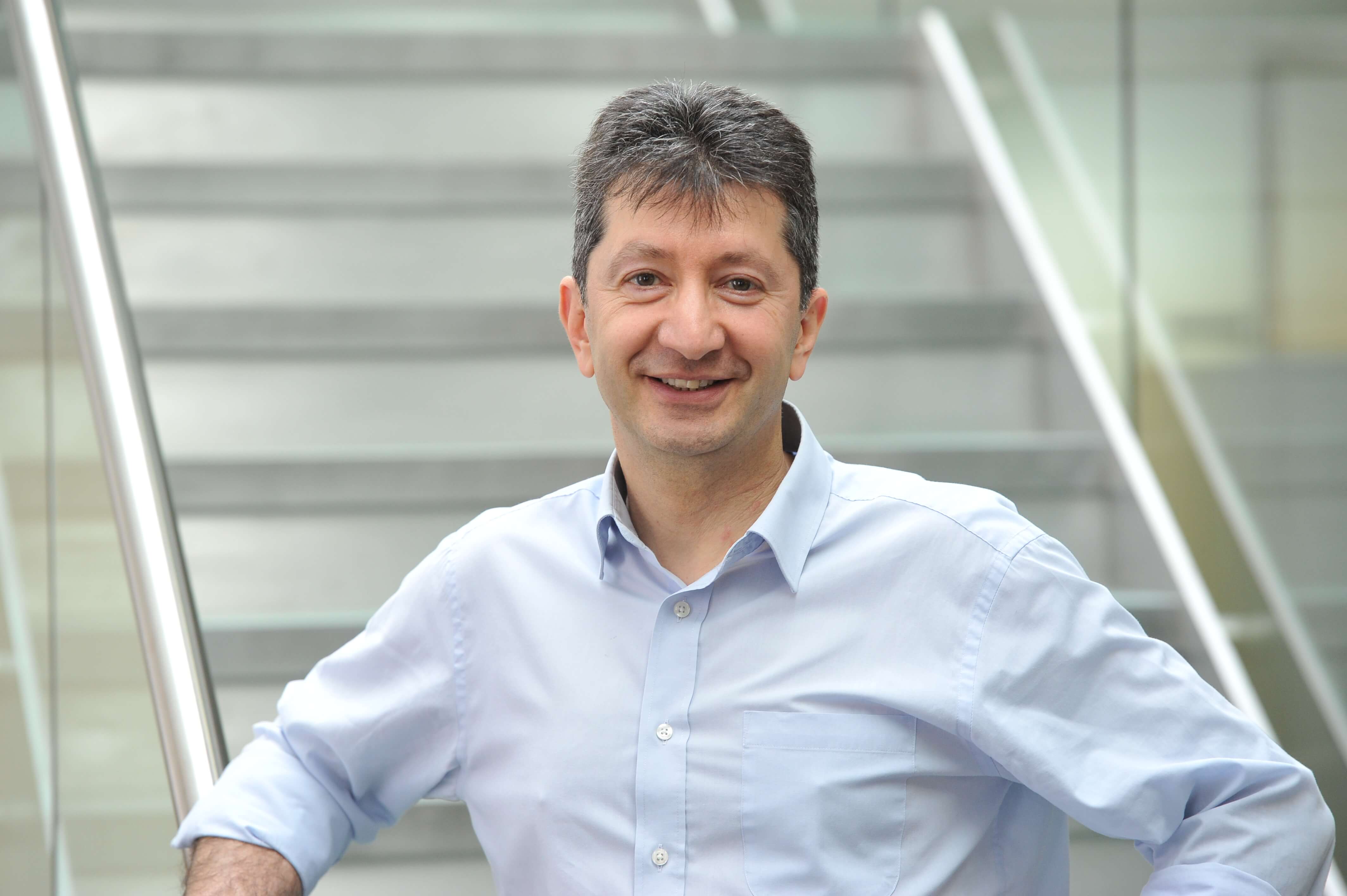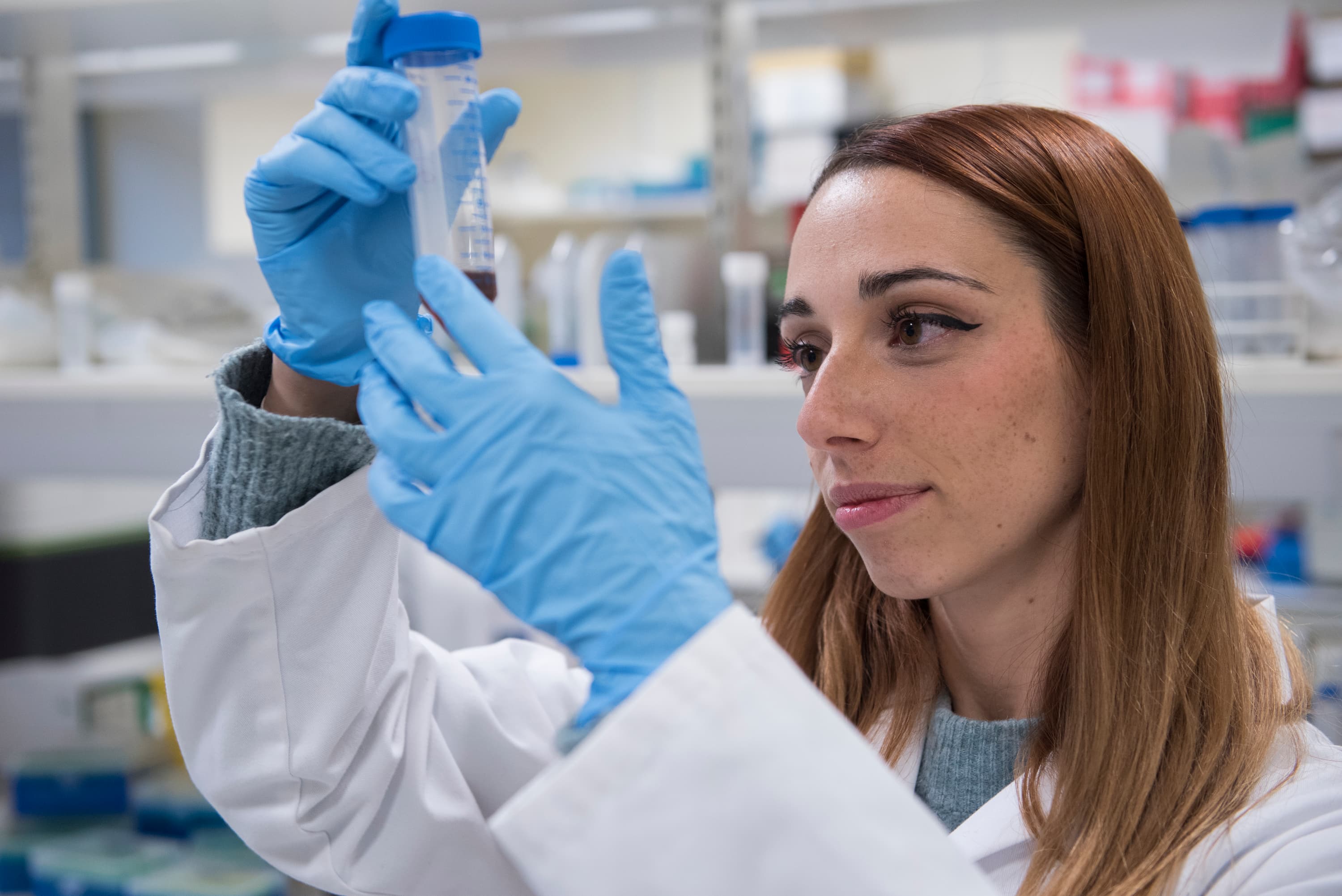As Professor of Neurology and Complex Disease Genetics, Ammar Al-Chalabi has been at the forefront of MND research for over 25 years. One of the most recognisable and charismatic researchers in MND, he’s built relationships globally throughout his career that have vastly increased the scope of what MND research can achieve.
As Director of King’s Motor Neuron Disease (MND) Care and Research Centre, he leads one of the world’s most significant hubs for MND, working both face-to-face with MND patients and crunching the complex data in the lab.
Biography
I never really thought I’d end up becoming a research scientist. I always loved science, but I’d planned on becoming a medical doctor – a much more normal career path!
Everything changed a few years after I’d qualified as a doctor. I was chatting to people about doing a PhD and I ended up meeting Professor Nigel Leigh in London – the man known as ‘Mr MND’ here in the UK. That where my connection with MND began.
Getting hooked
I signed up to study under him, and it wasn’t long before I was hooked on an academic scientific career. I found all the science so fascinating – but the thing that really stood out for me was genetics.
At the time, everyone was saying “oh, MND’s not genetic.” But I was sure it wasn’t that simple. So that became my career path: to truly understand the genetic influences in MND.
I did my fellowship, got my PhD. And then I moved on to another fellowship, juggling my research with a role as a Consultant Neurologist.
The MRC Fellowship involved a year at Harvard working with Professor Bob Brown – another big figure in MND research. Together, we made a significant breakthrough.
An important step
Using extensive data and DNA samples provided by one family, we discovered a big genetic anomaly for MND – and a condition called frontotemporal dementia – on chromosome 9. It was the first time that a genetic link had been made between the two conditions – and an important step towards defining the role genetics played in MND.
Since then, the international community has collaborated to try to understand this signal better – and we now know it’s attached to a gene called C9orf72. That gene’s responsible for about 40% of people with a family history of MND.
It’s so important – not just because it helps us understand why MND happens, but because, the more we understand how cells are working, the more chance we have of finding treatments. There’s now a gene therapy trial in place for people with this mutation of C9orf72. I’m so proud to have played a part in getting us there.
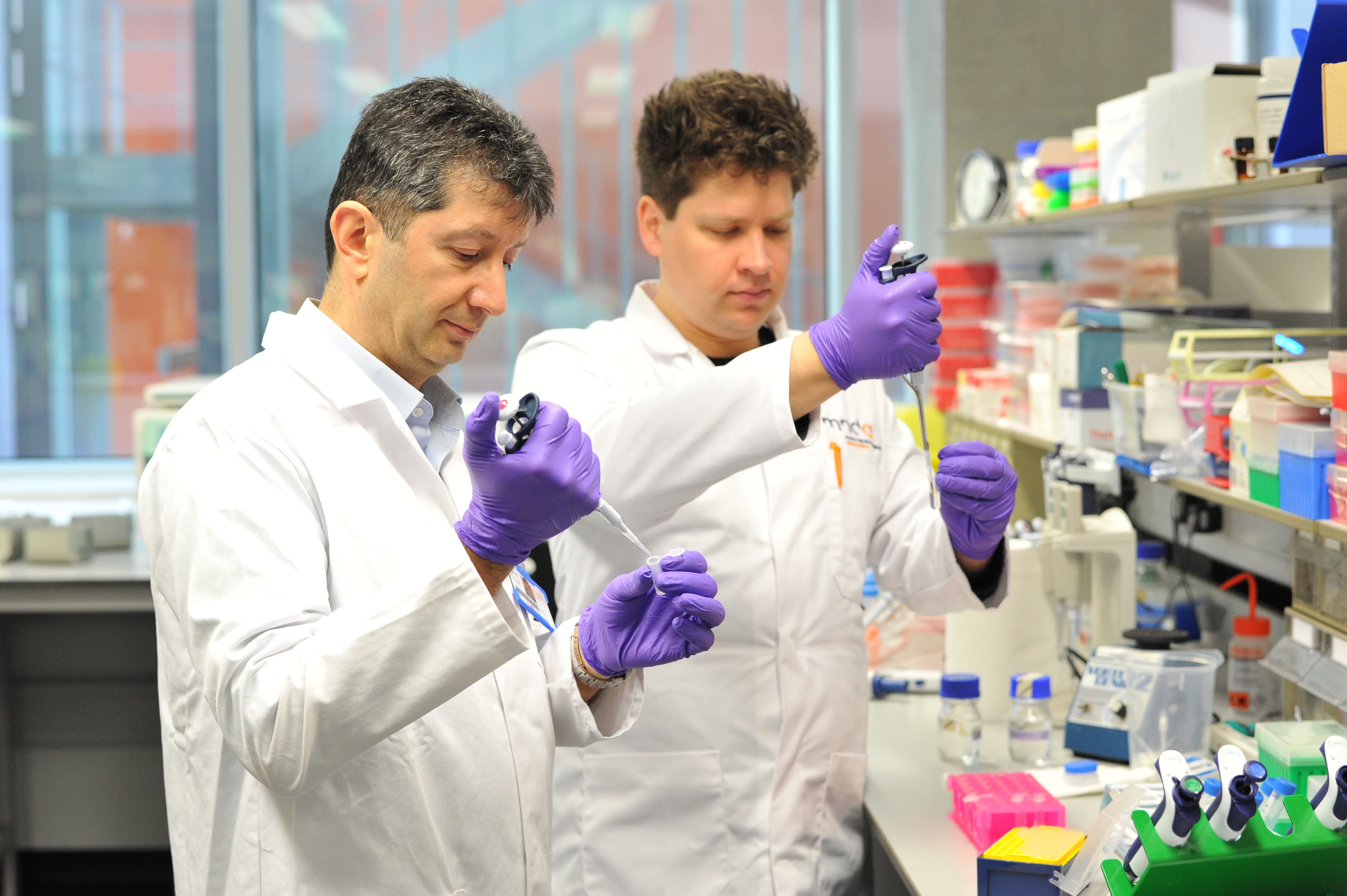
Professor Al-Chalabi in the lab at King’s College
A life-long partnership
I met Dr Brian Dickie – now the Director of Research Development at the MND Association – not long after returning to the UK. He came to visit me in my lab and asked to see some of my work.
Over the years, my contact with Brian meant I became more and more involved with the MND Association. I’ve always felt very supported by them. They and their supporters have helped fund so much of my work over the years.
An unexpected boost
Funding has always been a challenge for researchers like me, but the Ice Bucket Challenge was a massive – and unexpected – boost. The donations the MND Association received gave us the chance to make the most of all the international relationships between researchers – and greatly accelerate all our genetic research.
We used some of the funding to start Project MinE, an international collaboration looking at every single letter in the genetic code for each person with MND. It’s a huge project, involving researchers from 20 countries – but it shows what can be achieved when we have the funding behind us.
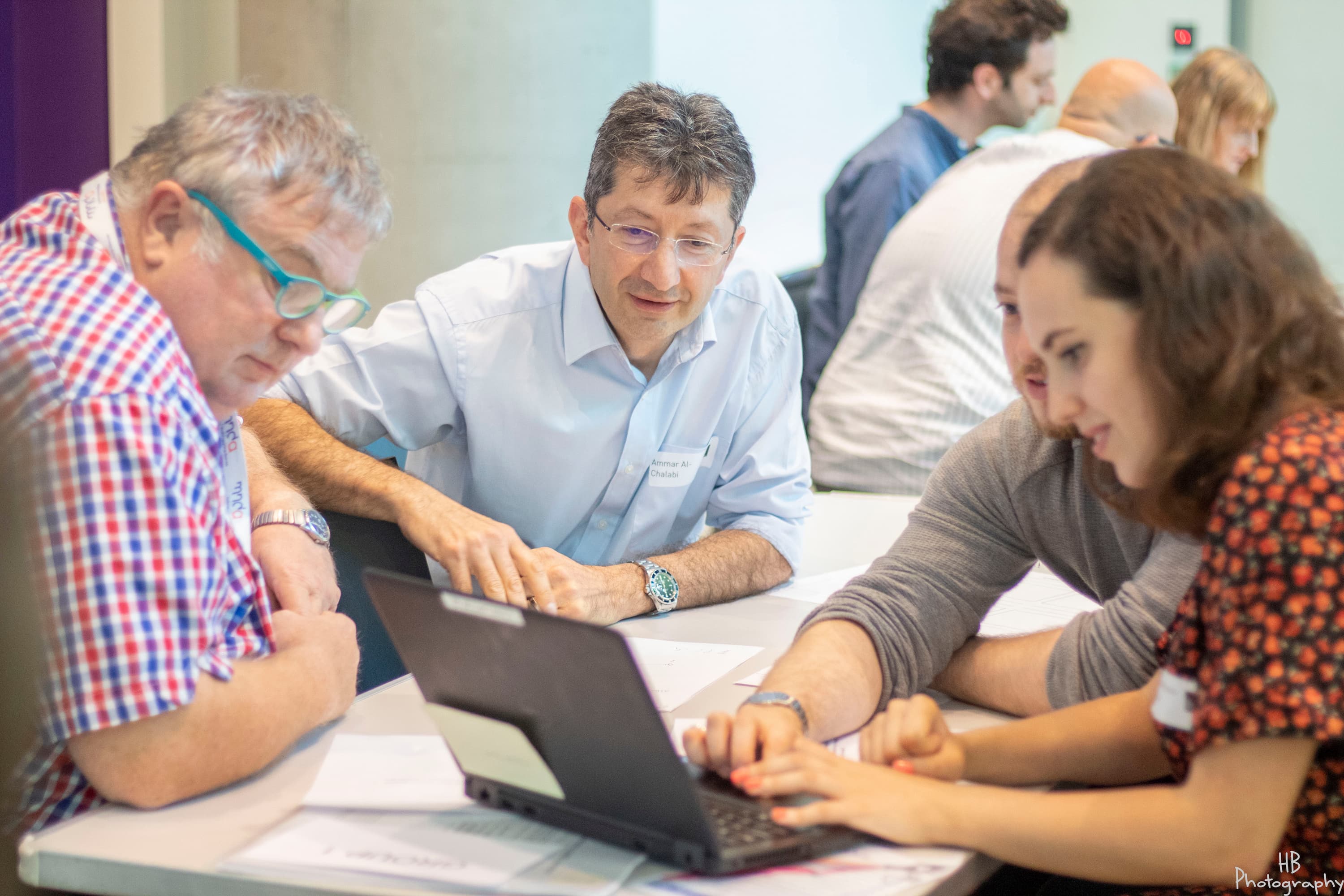
For many MND researchers, like Professor Al-Chalabi, collaboration with other scientists is vital
The scope of Project MinE is just incredible. Back when I started, it was the sort of thing we could only dream about. We’re looking at 3 billion possible genetic variations per person and aiming to sequence the genomes of over 20,000 people – each one taking up a whole hard drive.
The project has already helped us discover more and more genes related to MND and more and more non-genetic risk factors such as lifestyle and environment that influence genes. And all that knowledge is bringing us closer to a cure – at least for some types of MND.
Step by step
We’ve also been trying to understand some of the mysteries of MND. For example, why does it typically develop in your 50s or 60s? Why does it start in one area and spread? And why can you carry a gene variation and not develop the disease?
Cancer shares a lot of these properties. And as you may know, cancer develops by a multi-step process, which means you have to have lots of hits – it might be genetic background, you might have to smoke, you might have some radiation exposure, or drink a lot of coffee. Once all of these things have happened, then you’re at risk of getting the cancer.
We wondered if the same was true in MND. Through a very big international collaboration, we were able to show that it is: there are six steps to getting MND. We already know that some of the gene variations people carry account for some of the steps – now we need to work out the remainder.
A profound connection
Relationships with other researchers help us do so much – but relationships with people with MND are just as vital. And now, as Director of the King’s MND Clinic, 50% of my time is still spent in the clinic with patients.
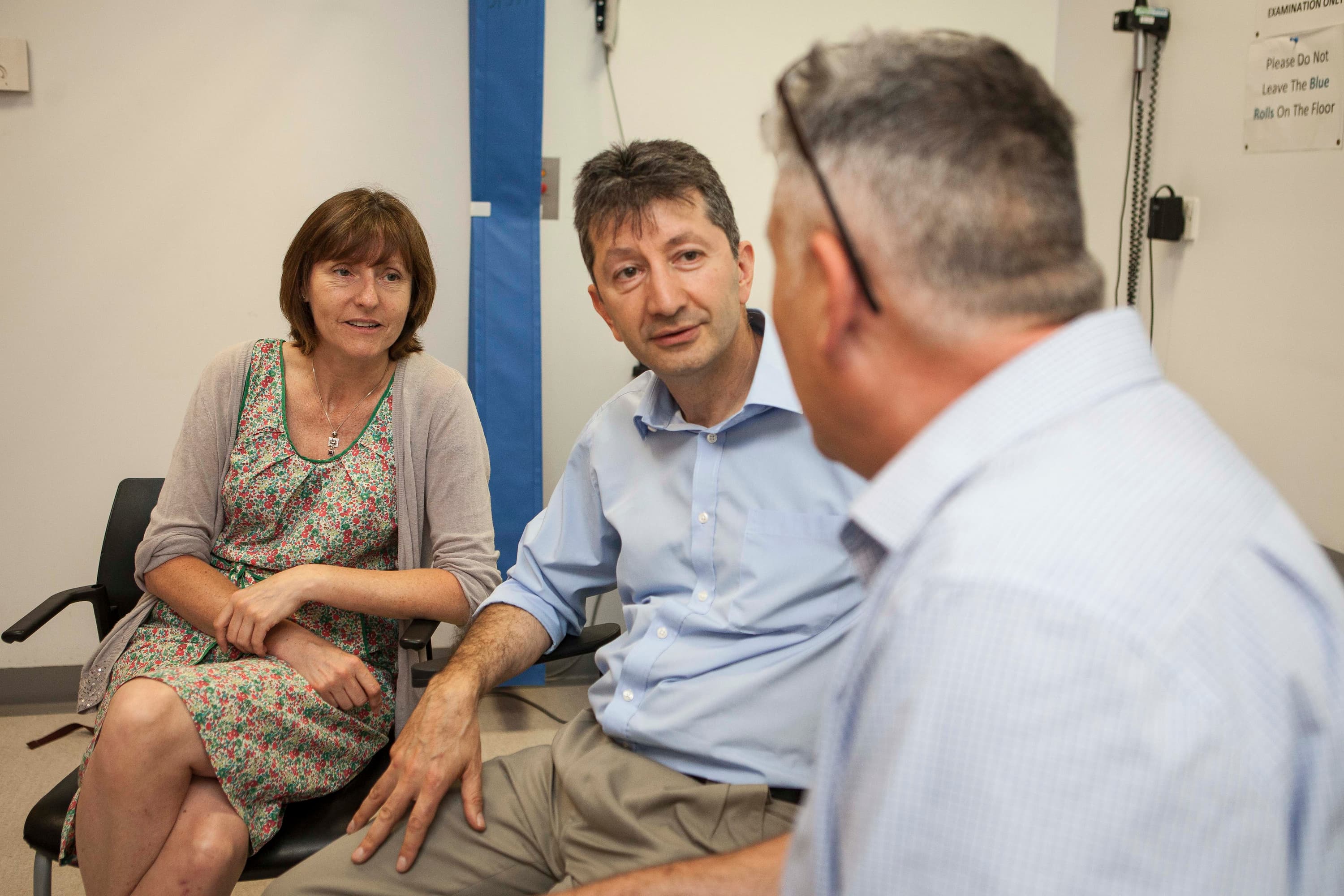
Professor Al-Chalabi with patients at the King’s MND clinic
Being in such close contact with patients influences me as a researcher in two ways. First, it gives me a direct relevance for what we are doing. By seeing patients, we understand the challenges they’re facing – and that helps us understand the questions we need to answer.
The other aspect is reminding us why we do what we do. I still remember one of the first people I met with MND – it was a very profound experience for me. And now I make sure every single member of my research team, no matter how junior or senior, has always come to at least one clinic and been in contact with people with MND.
He bangs the drums
Outside of work, I’m married with two children. We live in the Midlands and I commute into London each day. It’s a long trip, but I get a lot of work done on the train. Its protected time where I can’t be interrupted.
I have lots of hobbies outside of work, but my main one is music. I’m a drummer in a band, and we gig roughly once a month. Last year we made a massive £25 from streaming on Spotify – that’s £5 each before tax!
I also really love photography, particularly astrophotography. So, if you ever come to one of my talks, you’ll see pictures of the night sky thrown in with the rest of the slides.
Hope on the horizon
Research has come so far in the past 40 years. Even the last 20 years – we understand so much more about the nature of MND, and how to fight it.
When I started this work, if you’d asked me if this was a curable condition, I’d have honestly said no. But now, I think not only is it curable, I think we are probably going to cure some types of MND very soon.
Everything seems to be coming into focus and coming together.
That’s what excites me most. I think there is a lot of hope now. True hope, that we will actually crack this.
